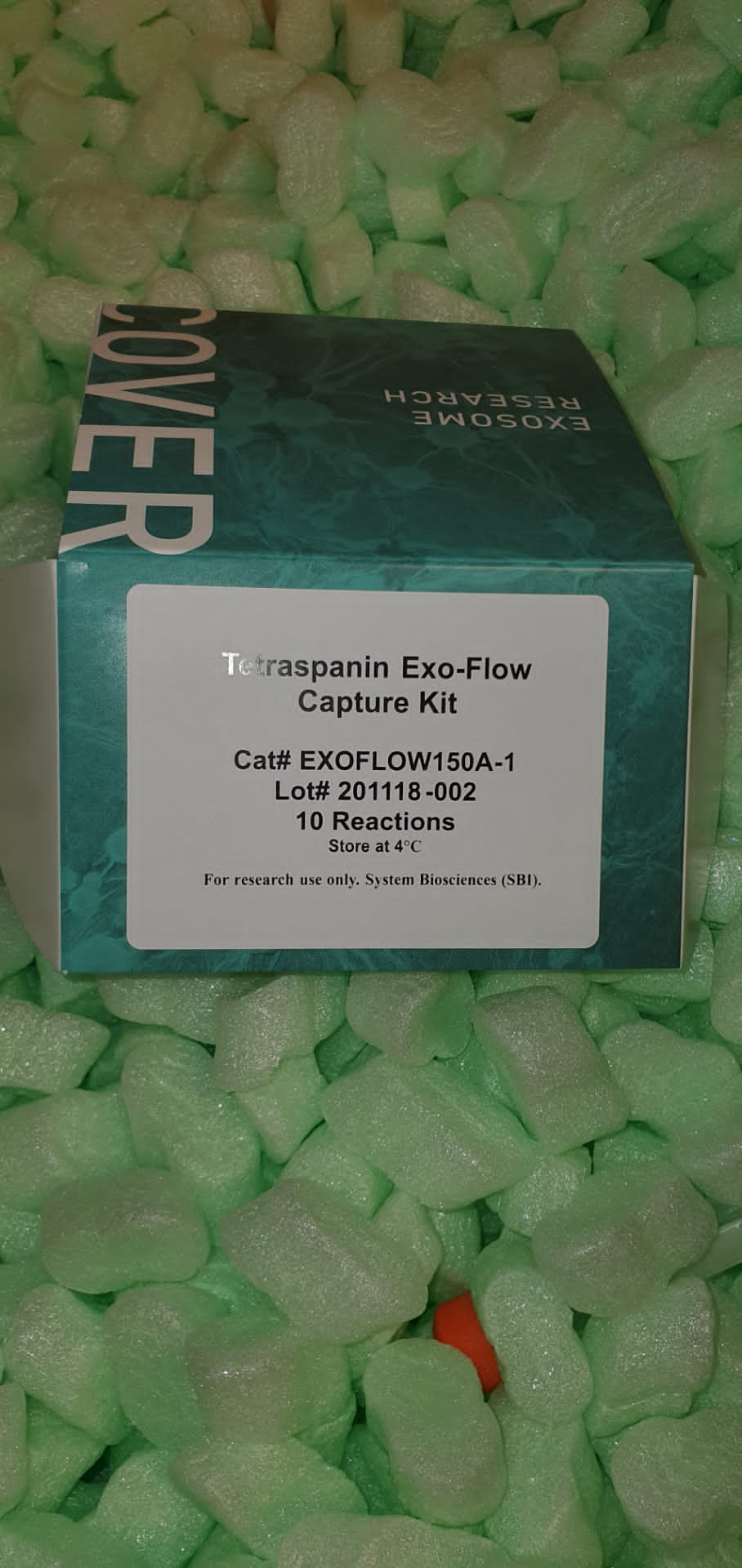Automated flow cytometry (FC) data analysis instruments for cell inhabitants identification and characterization are more and more getting used in educational, biotechnology, pharmaceutical, and scientific laboratories. The improvement of those computational strategies is designed to beat reproducibility and course of bottleneck points in guide gating, nevertheless, the take-up of those instruments stays (anecdotally) low. Here, we carried out a complete literature survey of state-of-the-art computational instruments usually revealed by analysis, scientific, and biomanufacturing laboratories for automated FC data analysis and recognized fashionable instruments based mostly on literature quotation counts. Dimensionality discount strategies ranked extremely, resembling generic t-distributed stochastic neighbor embedding (t-SNE) and its preliminary Matlab-based implementation for cytometry data viSNE.
Software with graphical person interfaces additionally ranked extremely, together with PhenoGraph, SPADE1, FlowSOM, and Citrus, with unsupervised studying strategies outnumbering supervised studying strategies, and algorithm kind recognition unfold throughout Ok-Means, hierarchical, density-based, model-based, and different lessons of clustering algorithms. Additionally, as an example the precise use usually inside scientific areas alongside frequent citations, a survey issued by UK NEQAS Leucocyte Immunophenotyping to establish software utilization trends amongst scientific laboratories was accomplished.
The survey revealed 53% of laboratories haven’t but taken up automated cell inhabitants identification strategies, although amongst people who have, Infinicyt software is probably the most regularly recognized. Survey respondents thought of data output high quality to be a very powerful issue when utilizing automated FC data analysis software, adopted by software velocity and degree of technical help. This overview discovered variations in software utilization between biomedical establishments, with instruments for discovery, data exploration, and visualization extra fashionable in academia, whereas automated instruments for specialised focused analysis that apply supervised studying strategies had been extra used in scientific settings.
Nanozymes as Enzyme Inhibitors
Nanozyme is a kind of nanomaterial with intrinsic enzyme-like exercise. Following the discovery of nanozymes in 2007, nanozyme know-how has turn into an rising subject bridging nanotechnology and biology, attracting analysis from multi-disciplinary areas centered on the design and synthesis of catalytically energetic nanozymes. However, numerous forms of enzymes will be mimicked by nanomaterials, and our present understanding of nanozymes as enzyme inhibitors is proscribed. Here, we offer a quick overview of the utility of nanozymes as inhibitors of enzymes, resembling R-chymotrypsin (ChT), β-galactosidase (β-Gal), β-lactamase, and mitochondrial F0F1-ATPase, and the mechanisms underlying inhibitory exercise. The benefits, challenges and future analysis instructions of nanozymes as enzyme inhibitors for biomedical analysis are additional mentioned.
These constructions had been deposited by over 13,000 totally different analysis teams. Interestingly, regardless of the spectacular advances in synchrotron applied sciences, the median decision of macromolecular constructions decided utilizing synchrotrons has remained fixed all through the final 30 years, at about 2 Å. Similarly, the median instances from the data assortment to the deposition and launch haven’t modified considerably. We describe challenges to reproducibility associated to recording all related data and metadata through the synchrotron experiments, together with diffraction photographs.
Finally, we focus on a number of the latest opinions suggesting a diminishing significance of X-ray crystallography attributable to spectacular advances in Cryo-EM and theoretical modeling. We consider that synchrotrons of the longer term will more and more evolve in direction of a life science heart mannequin, the place X-ray crystallography, Cryo-EM, and different experimental and computational sources and information are encompassed inside a flexible analysis facility. The latest response of crystallographers to the COVID-19 pandemic means that X-ray crystallography performed at synchrotron beamlines will proceed to play an important function in structural biology and drug discovery for years to come back.
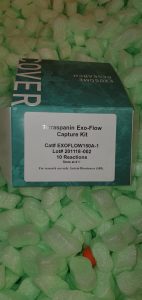
Applications of atomic drive microscopy in trendy biology
Single-molecule drive spectroscopy (SMFS) is an rising software to analyze mechanical properties of biomolecules and their responses to mechanical forces, and one of many most-used methods for mechanical manipulation is the atomic drive microscope (AFM). AFM was invented as an imaging software which can be utilized to picture biomolecules in sub-molecular decision in physiological circumstances.
It may also be used as a molecular drive probe for making use of mechanical forces on biomolecules. In this transient overview, we’ll present thrilling examples from latest literature which present how the advances in AFM have enabled us to achieve deep insights into mechanical properties and mechanobiology of biomolecules. AFM has been utilized to check mechanical properties of cells, tissues, microorganisms, viruses in addition to organic macromolecules resembling proteins. A multipronged strategy is required to diversify the analysis, as a mixture with optical spectroscopy and computer-based steered molecular dynamic simulations together with SMFS may help us achieve additional insights into the sector of biophysics and trendy biology.
 ELISA NEPTUNE BUFFER Reagent |
|
GWB-Q00222 |
GenWay Biotech |
500 ml |
Ask for price |
 ELISA NEPTUNE BUFFER Reagent |
|
GWB-Q00223 |
GenWay Biotech |
1000 ml |
Ask for price |
 Alternative Block™ ELISA Blocking Buffer, Synthetic |
|
6299 |
Immunochemistry |
100 mL |
EUR 52.25 |
 Alternative Block™ ELISA Blocking Buffer, Synthetic |
|
6300 |
Immunochemistry |
500 mL |
EUR 145 |
 Alternative Block™ ELISA Blocking Buffer, Synthetic |
|
6301 |
Immunochemistry |
1 L |
EUR 290 |
 Monster Block™ ELISA Blocking Buffer, Non-Mammalian |
|
6295 |
Immunochemistry |
100 mL |
EUR 52.25 |
 Monster Block™ ELISA Blocking Buffer, Non-Mammalian |
|
6296 |
Immunochemistry |
500 mL |
EUR 145 |
 Monster Block™ ELISA Blocking Buffer, Non-Mammalian |
|
6297 |
Immunochemistry |
1 L |
EUR 290 |
 OOSA09562-100ML - ELISA NEPTUNE BUFFER Accessory Reagent |
|
OOSA09562-100ML |
Aviva Systems Biology |
100ml |
EUR 169 |
|
|
 OOSA11205-500ML - ELISA NEPTUNE BUFFER Accessory Reagent |
|
OOSA11205-500ML |
Aviva Systems Biology |
500ml |
EUR 519 |
|
|
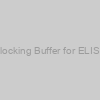 Blocking Buffer for ELISA |
|
abx090807-500ml |
Abbexa |
500 ml |
EUR 460.8 |
|
|
 Blocking Buffer for ELISA |
|
GWB-E120C6 |
GenWay Biotech |
500 ml |
Ask for price |
 Blocking Buffer |
|
abx098972-1vial |
Abbexa |
1 vial |
EUR 184.8 |
|
|
 Blocking Buffer |
|
RM01757 |
Abclonal |
20mL |
EUR 280 |
 Blocking Buffer |
|
ML044-100ML |
EWC Diagnostics |
1 unit |
EUR 4.75 |
|
Description: Blocking Buffer |
 Blocking Buffer |
|
ML044-500ML |
EWC Diagnostics |
1 unit |
EUR 16.62 |
|
Description: Blocking Buffer |
 Blocking Buffer |
|
abx098972-100l |
Abbexa |
100 µl |
EUR 93.75 |
 Blocking Buffer |
|
abx098972-1ml |
Abbexa |
1 ml |
Ask for price |
 Blocking Buffer |
|
abx098972-200l |
Abbexa |
200 µl |
Ask for price |
 TBS Blocking Buffer Pack |
|
AR0143 |
BosterBio |
200mL/pack |
EUR 78 |
 Blocking Buffer, 10X, 250ML |
|
X109-250ML |
Arbor Assays |
250ML |
EUR 360 |
 Blocking Buffer, 10X, 25ML |
|
X109-25ML |
Arbor Assays |
25ML |
EUR 59 |
 Blocking Buffer) EZBlock? (TBS) Blocking Buffer |
|
2117-1000 |
Biovision |
each |
EUR 254.4 |
 Blocking Buffer) EZBlock? (TBS) Blocking Buffer |
|
2117-200 |
Biovision |
each |
EUR 150 |
 Blocking Buffer) EZBlock? (PBS) Blocking Buffer |
|
2128-1000 |
Biovision |
each |
EUR 274.8 |
 Blocking Buffer) EZBlock? (PBS) Blocking Buffer |
|
2128-200 |
Biovision |
each |
EUR 164.4 |
 BSA-based) ELISA Plate Blocking Buffer concentrate (10X) BSA-based |
|
80060 |
Alpha Diagnostics |
50 ml |
EUR 242.4 |
 General Blocking Buffer-BB1 |
|
KF17337 |
Neuromics |
500 ml |
EUR 277.2 |
 SynBlock Blocking Buffer-BB3 |
|
KF17339 |
Neuromics |
500 ml |
EUR 292.8 |
 PBS Blocking buffer with BSA |
|
SB0626 |
Bio Basic |
1pk, 1L |
EUR 100.72 |
|
|
 TBS blocking buffer with BSA |
|
SD8113 |
Bio Basic |
1pk, 1L |
EUR 100.72 |
|
|
 Casein Blocking Buffer in PBS |
|
40320020-1 |
Glycomatrix |
500 mL |
EUR 41.24 |
 Casein Blocking Buffer in PBS |
|
40320020-2 |
Glycomatrix |
1 L |
EUR 69.42 |
 Casein Blocking Buffer in TBS |
|
40320028-1 |
Glycomatrix |
500 mL |
EUR 34.05 |
 Casein Blocking Buffer in TBS |
|
40320028-2 |
Glycomatrix |
1 L |
EUR 57.9 |
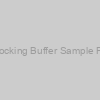 3 Blocking Buffer Sample Pack |
|
KF17340 |
Neuromics |
3 x 100 ml |
EUR 246 |
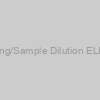 ChonBlock Blocking/Sample Dilution ELISA Buffer, 100 ml |
|
9068 |
Chondrex |
100 ml |
EUR 77 |
|
Description: ChonBlock Blocking/Sample Dilution ELISA Buffer |
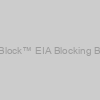 OneBlock™ EIA Blocking Buffer |
|
20-315 |
Genesee Scientific |
1000ml/Unit |
EUR 146.05 |
|
Description: For ELISA |
 Blocking Buffer) EZBlock? T20 (TBS) Blocking Buffer |
|
2140-1000 |
Biovision |
each |
EUR 261.6 |
 Blocking Buffer) EZBlock? T20 (TBS) Blocking Buffer |
|
2140-200 |
Biovision |
each |
EUR 144 |
 Blocking Buffer) EZBlock? T20 (PBS) Blocking Buffer |
|
2143-1000 |
Biovision |
each |
EUR 261.6 |
 Blocking Buffer) EZBlock? T20 (PBS) Blocking Buffer |
|
2143-200 |
Biovision |
each |
EUR 144 |
 Blocking Buffer for Lateral Flow |
|
GWB-598302 |
GenWay Biotech |
500 ml |
Ask for price |
 Blocking Buffer for ICC and IHC |
|
SF40011 |
Neuromics |
10 ml |
EUR 153.6 |
) Blocking Buffer (10% BSA in 1XPBS) |
|
ML183-100ML |
EWC Diagnostics |
1 unit |
EUR 12.44 |
|
Description: Blocking Buffer (10% BSA in 1XPBS) |
) Blocking Buffer (10% BSA in 1XPBS) |
|
ML183-500ML |
EWC Diagnostics |
1 unit |
EUR 55.74 |
|
Description: Blocking Buffer (10% BSA in 1XPBS) |
) Blocking Buffer (1% BSA in 1XPBS) |
|
ML184-100ML |
EWC Diagnostics |
1 unit |
EUR 2.8 |
|
Description: Blocking Buffer (1% BSA in 1XPBS) |
) Blocking Buffer (1% BSA in 1XPBS) |
|
ML184-500ML |
EWC Diagnostics |
1 unit |
EUR 11.09 |
|
Description: Blocking Buffer (1% BSA in 1XPBS) |
) Blocking Buffer (10% BSA in 1XTBS) |
|
ML185-100ML |
EWC Diagnostics |
1 unit |
EUR 12.44 |
|
Description: Blocking Buffer (10% BSA in 1XTBS) |
) Blocking Buffer (10% BSA in 1XTBS) |
|
ML185-500ML |
EWC Diagnostics |
1 unit |
EUR 55.74 |
|
Description: Blocking Buffer (10% BSA in 1XTBS) |
) Blocking Buffer (1% BSA in 1XTBS) |
|
ML186-100ML |
EWC Diagnostics |
1 unit |
EUR 2.8 |
|
Description: Blocking Buffer (1% BSA in 1XTBS) |
) Blocking Buffer (1% BSA in 1XTBS) |
|
ML186-500ML |
EWC Diagnostics |
1 unit |
EUR 11.09 |
|
Description: Blocking Buffer (1% BSA in 1XTBS) |
 West-Ezier Super Blocking Buffer |
|
W3700-010 |
GenDepot |
100ml |
EUR 116.4 |
 West-Ezier Super Blocking Buffer |
|
W3700-050 |
GenDepot |
500ml |
EUR 198 |
 West-Ezier Super Blocking Buffer |
|
W3700-100 |
GenDepot |
1L |
EUR 295.2 |
 Blocking Buffer 1X in PBS) BSA (3%) Blocking Buffer 1X in PBS |
|
21420071-1 |
Glycomatrix |
250 ml |
EUR 31.63 |
 Blocking Buffer 1X in PBS) BSA (3%) Blocking Buffer 1X in PBS |
|
21420071-2 |
Glycomatrix |
500 ml |
EUR 49.18 |
 Blocking Buffer 1X in PBS) BSA (3%) Blocking Buffer 1X in PBS |
|
21420071-3 |
Glycomatrix |
1 L |
EUR 73.3 |
 Blocking Buffer 1X in TBS) BSA (3%) Blocking Buffer 1X in TBS |
|
40220095-1 |
Glycomatrix |
100 mL |
EUR 30.47 |
 Blocking Buffer 1X in TBS) BSA (3%) Blocking Buffer 1X in TBS |
|
40220095-2 |
Glycomatrix |
250 mL |
EUR 44.66 |
 Blocking Buffer 1X in TBS) BSA (3%) Blocking Buffer 1X in TBS |
|
40220095-3 |
Glycomatrix |
1 L |
EUR 77.39 |
 Blocking Buffer in PBS) Gelatin (1%) Blocking Buffer in PBS |
|
40720012-1 |
Glycomatrix |
500 mL |
EUR 29.83 |
 Blocking Buffer in PBS) Gelatin (1%) Blocking Buffer in PBS |
|
40720012-2 |
Glycomatrix |
1 L |
EUR 56.78 |
 Blocking Buffer in TBS) Gelatin (1%) Blocking Buffer in TBS |
|
40720020-1 |
Glycomatrix |
500 mL |
EUR 29.83 |
 Blocking Buffer in TBS) Gelatin (1%) Blocking Buffer in TBS |
|
40720020-2 |
Glycomatrix |
1 L |
EUR 53.99 |
) Normal Rabbit Blocking Buffer (Concentrated) |
|
E-IR-R124-each |
Elabscience Biotech |
each |
Ask for price |
 Blocking Buffer in PBST 1X) BSA (3%) Blocking Buffer in PBST 1X |
|
21420072-1 |
Glycomatrix |
250 ml |
EUR 25.12 |
 Blocking Buffer in PBST 1X) BSA (3%) Blocking Buffer in PBST 1X |
|
21420072-2 |
Glycomatrix |
500 ml |
EUR 43.6 |
 Blocking Buffer in PBST 1X) BSA (3%) Blocking Buffer in PBST 1X |
|
21420072-3 |
Glycomatrix |
1 L |
EUR 66.55 |
 Blocking Buffer in 10X PBS) BSA (3%) Blocking Buffer in 10X PBS |
|
40220064-1 |
Glycomatrix |
100 mL |
EUR 33.17 |
 Blocking Buffer in 10X PBS) BSA (3%) Blocking Buffer in 10X PBS |
|
40220064-2 |
Glycomatrix |
200 mL |
EUR 49.75 |
 Blocking Buffer in 10X PBS) BSA (3%) Blocking Buffer in 10X PBS |
|
40220064-3 |
Glycomatrix |
500 mL |
EUR 112.92 |
 TrueBlack® WB Blocking Buffer Kit |
|
23013-T |
Biotium |
1kit |
EUR 89 |
|
|
|
Description: Gelatin from cold water fish skin |
 TrueBlack® WB Blocking Buffer Kit |
|
23013-T-1 |
Biotium |
KT |
EUR 89 |
 Blocking Buffer and Coating Stabilizer |
|
abx090811-1000ml |
Abbexa |
1000 ml |
EUR 627.6 |
|
|
 Blocking Buffer and Coating Stabilizer |
|
abx090811-100l |
Abbexa |
100 µl |
EUR 725 |
 Blocking Buffer and Coating Stabilizer |
|
abx090811-1ml |
Abbexa |
1 ml |
Ask for price |
 Blocking Buffer and Coating Stabilizer |
|
abx090811-200l |
Abbexa |
200 µl |
Ask for price |
) Dilution Buffer (Strengthen Blocking) |
|
DB-02 |
ACROBIOSYSTEMS |
50ml |
EUR 107 |
|
|
|
Description: Serum and some samples often cause nonspecific binding,especially after blocking,which lead to high background and low sensitivity. |
 Phosph-Free Blocking Buffer, Synthetic |
|
6262 |
Immunochemistry |
100 mL |
EUR 52.25 |
) Permeabilization and Blocking Buffer (5X) |
|
22017-1 |
Biotium |
EA |
EUR 117 |
 OORA00238-1L - ELISA Microwell Blocking Buffer with Stabilizer |
|
OORA00238-1L |
Aviva Systems Biology |
1L |
EUR 319 |
|
|
 PBS Blocking buffer with non fat milk |
|
SB0625 |
Bio Basic |
1pk, 1L |
EUR 80.88 |
|
|
 Casein-based PBS Blocking Buffer Pack |
|
AR0182 |
BosterBio |
500mL/Pack |
EUR 84 |
 Casein-based TBS Blocking Buffer Pack |
|
AR0183 |
BosterBio |
500mL/Pack |
EUR 84 |
 Tween 20 Blocking Buffer, 1% in PBS, 10X |
|
42020401-1 |
Bio-WORLD |
500 mL |
Ask for price |
 Tween 20 Blocking Buffer, 1% in PBS, 10X |
|
42020401-2 |
Bio-WORLD |
1 L |
Ask for price |
 Tween 20 Blocking Buffer, 1% in PBS, 10X |
|
42020401-3 |
Bio-WORLD |
2 L |
Ask for price |
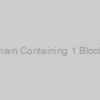 Claudin Domain Containing 1 Blocking Peptide |
|
33R-9186 |
Fitzgerald |
100 ug |
EUR 119 |
|
|
|
Description: A synthetic peptide for use as a blocking control in assays to test for specificity of CLDND1 antibody, catalog no. 70R-6340 |
 Casein Blocking Buffer with Fish Gelatin |
|
10450001-1 |
Glycomatrix |
90 mL |
EUR 48.63 |
 Casein Blocking Buffer with Fish Gelatin |
|
10450001-2 |
Glycomatrix |
500 mL |
EUR 109.02 |
 OneBlock™ Western-CL Blocking Buffer |
|
20-313 |
Genesee Scientific |
1000ml/Unit |
EUR 146.05 |
|
Description: For Chemiluminescent Blots |
 OneBlock™ Western-FL Blocking Buffer |
|
20-314 |
Genesee Scientific |
1000ml/Unit |
EUR 146.05 |
|
Description: For Fluorescent Blots |
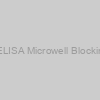 OORA00239-100ML - ELISA Microwell Blocking Buffer with Stabilizer |
|
OORA00239-100ML |
Aviva Systems Biology |
100mL |
EUR 119 |
|
|
 Blocking Buffer in 10X TBS, pH 7.4) BSA (10%) Blocking Buffer in 10X TBS, pH 7.4 |
|
40220068-1 |
Glycomatrix |
100 mL |
EUR 48.59 |
 Blocking Buffer in 10X TBS, pH 7.4) BSA (10%) Blocking Buffer in 10X TBS, pH 7.4 |
|
40220068-2 |
Glycomatrix |
200 mL |
EUR 89.77 |
 Blocking Buffer in 10X TBS, pH 7.4) BSA (10%) Blocking Buffer in 10X TBS, pH 7.4 |
|
40220068-3 |
Glycomatrix |
500 mL |
EUR 149.25 |
 EZBlock? Blocking Buffer and Signal Enhancer |
|
M4104-100 |
Biovision |
each |
EUR 183.6 |
 EZBlock? Blocking Buffer and Signal Enhancer |
|
M4104-500 |
Biovision |
each |
EUR 430.8 |
) Blocking Buffer for Lateral Flow (PBS based) |
|
abx090808-500ml |
Abbexa |
500 ml |
EUR 460.8 |
|
|
) Blocking Buffer 3 (Multiple PARP Assay Kits) |
|
79743 |
BPS Bioscience |
25 ml x 2 |
EUR 105 |
|
Description: This Blocking Buffer 3 is optimized for minimizing background in multiple PARP BPS Bioscience Assay Kits. _x000D__x000D_ |
) Normal Goat Blocking Buffer (Ready-to-Use) |
|
E-IR-R110-each |
Elabscience Biotech |
each |
Ask for price |
 Block Wash Buffer |
|
I044 |
Cygnus Technologies |
1000 ml |
EUR 632.4 |
|
|
|
Description: Block Wash Buffer by Cygnus Technologies is available in Europe via Gentaur. |
 Blocking Buffer 1X in TBS and Tween 20) BSA (3%) Blocking Buffer 1X in TBS and Tween 20 |
|
21420074-1 |
Glycomatrix |
250 ml |
EUR 31.87 |
It has discovered functions in biomedical fields like most cancers biology, the place it has been used each in the diagnostic phases in addition to drug discovery. AFM has been capable of reply questions pertaining to mechanosensing by neurons, and mechanical modifications in viruses throughout an infection by the viral particles in addition to the basic processes resembling cell division. Fundamental questions associated to protein folding have additionally been answered by SMFS like dedication of power panorama properties of number of proteins and their correlation with their organic capabilities.


